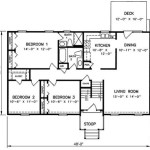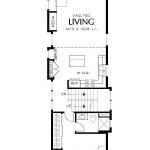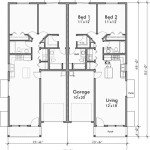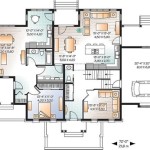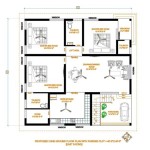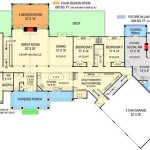How To Decorate an Open Floor Plan Living Room Kitchen
Open floor plans, characterized by the seamless integration of living, dining, and kitchen areas, present unique decorating challenges and opportunities. The absence of traditional walls necessitates a cohesive design strategy that defines distinct zones while maintaining a harmonious flow. Successful open floor plan design requires careful consideration of furniture placement, color palettes, lighting, and accessory choices to create a functional and aesthetically pleasing space.
The primary objective when decorating an open floor plan is to establish distinct areas for each function—living, dining, and cooking—without sacrificing the sense of openness that defines the design. This can be achieved through strategic use of furniture, area rugs, and architectural elements. Furthermore, the overall aesthetic should be consistent, reflecting a unified design vision that ties the different zones together.
Defining Zones with Furniture and Layout
Furniture arrangement is paramount in delineating boundaries within an open floor plan. Consider the following strategies:
Strategic Placement of Large Furnishings: A large sectional sofa can effectively demarcate the living area from the dining space. Position the sofa with its back facing the dining area, creating a visual barrier without completely obstructing the view. This establishes a clear separation while maintaining a connection between the two zones.
Use of Area Rugs: Area rugs are invaluable tools for defining specific areas. Place a large area rug beneath the living room furniture to create a distinct zone for relaxation and entertainment. Similarly, a separate rug can anchor the dining table and chairs, visually setting it apart from the surrounding space. Ensure that the rugs are appropriately sized for each area; a rug that is too small can make the space feel disjointed. The rug should ideally be large enough to accommodate all the furniture in the designated area, or at least the front legs of the furniture.
Creating Traffic Flow: Thoughtful furniture placement should accommodate natural traffic patterns through the space. Avoid obstructing pathways with furniture. Maintain clear walkways between the kitchen, dining area, and living room to ensure ease of movement and prevent the space from feeling cluttered. Consider the placement of seating and tables in relation to doorways and hallways.
Using Consoles and Bookshelves: Low console tables or bookshelves can serve as subtle room dividers without completely blocking the line of sight. These pieces can provide storage while visually separating the living area from the dining or kitchen space. The open shelving of a bookcase allows light to pass through, maintaining the airy feel of the open floor plan while still providing a sense of separation.
Establishing a Focal Point: Within the living area, identify a focal point, such as a fireplace, a large window with a view, or a statement piece of art. Arrange furniture around this focal point to create a cohesive and inviting gathering space. The placement of the focal point can influence the arrangement of other furniture and accessories within the living area.
Creating Cohesion with Color and Materials
Maintaining a consistent color palette and material selection is essential for creating a cohesive look throughout the open floor plan. Consider the following guidelines:
Unified Color Palette: Select a limited color palette of two to three primary colors and complementary accent colors. Use these colors consistently throughout the living room, dining area, and kitchen to create a sense of unity. Vary the shades and tones of these colors to add depth and interest. For example, use a lighter shade of the primary color on the walls and a darker shade on the furniture.
Material Consistency: Choose materials that complement each other and create a sense of harmony. If the kitchen features stainless steel appliances, incorporate stainless steel accents in the living and dining areas through lighting fixtures, hardware, or decorative items. Similarly, if the kitchen cabinets are made of wood, consider using wood accents in the living room furniture. Consider the texture of the materials as well. If you have sleek, modern kitchen cabinets, you might want to incorporate some softer textures, like a plush rug or velvet throw pillows, in the living room to add warmth and balance.
Repeating Patterns and Textures: Carry patterns and textures from one area to another to create a visual connection. For example, if you have a patterned backsplash in the kitchen, consider using throw pillows with a similar pattern in the living room. Or, if you have a textured rug in the dining area, incorporate a similar texture in the curtains or upholstery in the living room.
Neutral Backdrops: Employ a neutral color for the walls throughout the open floor plan. This provides a blank canvas that allows the furniture and accessories to take center stage. Neutral walls also make it easier to change the décor in the future without having to repaint the entire space. Gray, beige, and off-white are versatile neutral options.
Accent Color Placement: Use accent colors strategically to add pops of visual interest and to tie the different zones together. For example, use the same accent color in throw pillows, artwork, and kitchen accessories. This will help to create a cohesive and well-coordinated look.
Utilizing Lighting to Define and Enhance
Lighting plays a critical role in defining zones and creating ambiance in an open floor plan. A well-planned lighting scheme can enhance the functionality and aesthetics of each area.
Layered Lighting Approach: Implement a layered lighting approach that includes ambient, task, and accent lighting. Ambient lighting provides overall illumination for the space, while task lighting focuses on specific areas, such as the kitchen countertop or dining table. Accent lighting highlights architectural features or decorative objects.
Differentiated Lighting Fixtures: Use different types of lighting fixtures to distinguish the zones. For example, install pendant lights over the kitchen island, a chandelier above the dining table, and floor lamps in the living room. This helps to visually separate the areas and create a distinct atmosphere in each zone.
Dimming Capabilities: Install dimmer switches on the lighting fixtures to allow for adjustable lighting levels. This allows you to create different moods and atmospheres depending on the occasion. For example, you might want brighter lighting for cooking and dimmer lighting for relaxing in the living room.
Strategic Placement of Lamps: Place table lamps and floor lamps strategically throughout the open floor plan to provide targeted illumination and create a warm and inviting atmosphere. Lamps can also be used to highlight specific features, such as artwork or decorative objects.
Natural Light Optimization: Maximize the use of natural light by keeping windows unobstructed and using light-colored window treatments. Natural light can make the space feel larger and more open. Mirrors can also be used to reflect natural light and brighten up darker areas of the room.
Kitchen Specific Lighting: The kitchen area necessitates focused task lighting. Under-cabinet lighting illuminates countertops, making food preparation safer and more efficient. Recessed lighting provides general illumination while pendant lights over an island or peninsula offer both task and ambient lighting.
By carefully considering furniture placement, color palettes, and lighting strategies, it is possible to transform an open floor plan living room kitchen into a cohesive and inviting space that meets the needs of both functionality and aesthetics. The key is to create distinct zones while maintaining a sense of unity and flow throughout the entire area.

How To Decorate Your Open Floor Plan Like A Pro Interior Design Home Staging Jacksonville Fl Interiors Revitalized
:strip_icc()/open-floor-plan-design-ideas-21-rikki-snyder-4-c0012504a6594446932c2893164d3c95.jpeg?strip=all)
22 Open Floor Plan Decorating Ideas Straight From Designers

Making The Most Of Your Open Concept Space Brock Built

How To Decorate An Open Floor Plan 7 Design Tips

How To Decorate Your Open Floor Plan Christopher Companies

Open Concept Living Room Design Ideas Layout Family

15 Close To Perfect Traditional Open Living Room Ideas Home Design Lover Concept Floor Plan Kitchen

Stunning Open Concept Living Room Ideas

3 Small Open Layout Decor Tips And 23 Ideas Digsdigs

How To Choose And Use Colors In An Open Floor Plan

